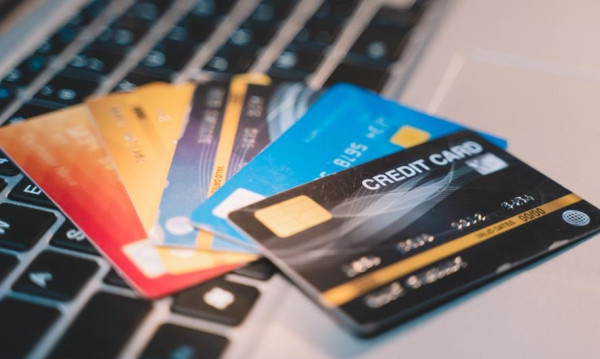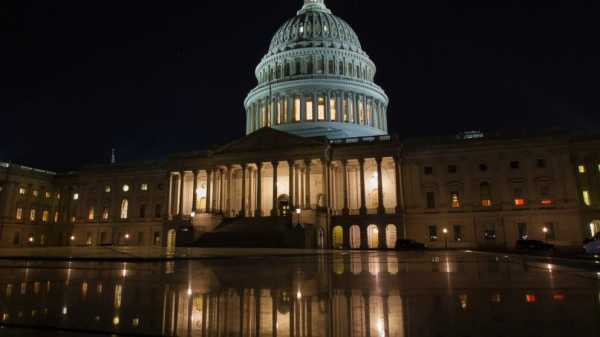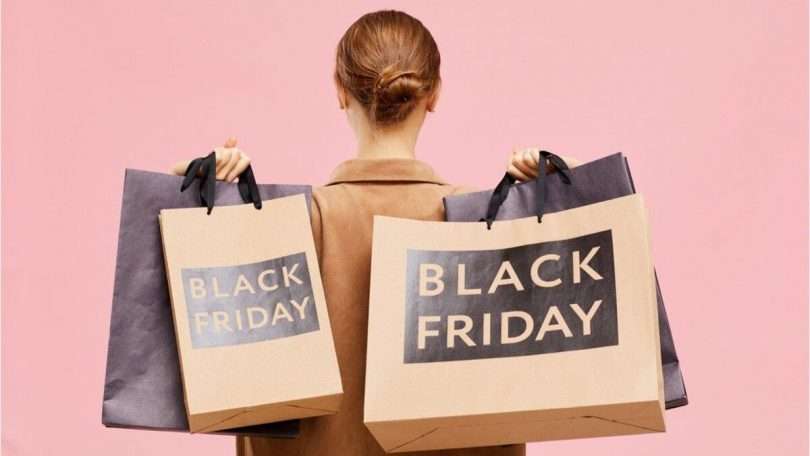Replacing sensitive payment card data with a unique identifier – a token – significantly increases transaction security and reduces the risk of fraud. This is now a standard on the market. As our survey shows, some domestic banks are open to using tokenization in other areas as well, in the future even in the case of domestic currency.

The Golden Banker Awards have been enriched this year not only with new categories, but also with a survey in which we focused on the approach of domestic banks to tokenization. Today, it is one of the most important trends in payments. A token, a unique, randomly generated sequence of numbers, increases the security of card transactions on the Internet. According to Mastercard research, last year at least 39% of Poles used this method. We can safely assume that this percentage is higher today. And it is good that this is happening – it is a technology that significantly increases the security of people using it.
We asked several questions in our survey – about tokenization of payment methods, but also about tokenization of various types of data or assets and the blockchain technology associated with it. 10 banks took part in the survey. The survey was anonymous, so we do not provide the names of the banks in the quoted answers.
The ball is in the e-commerce court
We asked banks at what stage they are in implementing tokenized payment methods, and in what time frame they foresee reaching 100% tokenization of payments. Although there are exceptions, banks do not expect to achieve such a goal in the coming years.
Only one bank boasts that it is already close: “The bank has achieved 100% tokenization of the Mastercard payment card portfolio, which constitutes 88% of payment cards […] held by the bank's customers.”
Other institutions see the possibility of reaching 100% tokenization within a few years at the earliest. “We support solutions that, in our opinion, have high potential among customers. We observe a constantly growing volume of contactless transactions made with tokenized cards. It is worth mentioning that tokenization is also used in the increasingly popular contactless BLIK among customers. Achieving a level of over 90% is a few years away,” says one of the banks.
“The degree of token usage for card payments in e-commerce depends on the readiness of stores, applications and integrators. E-commerce tokenization is not a conscious choice of the client, technically it depends on the specific merchant and integrator. Due to the changes expected by payment organizations, in the next few years we expect a significant increase in the use of tokens and the possibility of reaching even 100% of transactions,” adds the same bank.
The obstacles to achieving the 100% goal include e-commerce company restrictions and customer preferences. “Currently, most [of our] cards are tokenized in at least one wallet or service. We are the leader in the rankings in terms of the number of active tokens and mobile payments. The possibility of executing transactions 100% exclusively with tokens is limited by the availability of e-commerce merchants and customer habits,” indicates one of the banks.
100% tokens in a few years
In some banks, tokenization currently applies to a significant minority of issued cards. “The bank has recently begun work on implementing further digital wallets, which we plan to make available to our clients in the second quarter of 2025. Currently, approximately 25 percent of the bank's cards are tokenized. We expect to reach 100 percent in no less than 8 years,” informs another institution.
One of the banks openly admits that achieving 100% tokenization may be impossible due to the customer segment it serves. “The bank is prepared to tokenize cards and has a wide range of digital wallets available to customers, including Google Pay, Apple Pay, Garmin Pay and Xiaomi Pay. The target customer segment […] however, excludes the possibility of 100% switching to tokenized payment methods. Currently, tokenized cards in digital wallets constitute 15% of the Bank's card portfolio,” the bank reports.
How to Attract Customers – No Waiting for “Plastic”, Convenience and Rewards
We asked banks whether and how they promote tokenization of payment cards among their customers. Some banks indicated that they encourage new customers to use tokenization in particular, as this way they do not have to wait for the “plastic” to be sent to them.
“The bank conducts standard direct marketing and educational activities encouraging customers who use mobile applications to add a card to their phone. This particularly applies to new cards issued for newly opened accounts and new cards. By adding a card to the phone, the card user can use it immediately after ordering the card,” says one of the institutions.
“A standard incentive to tokenize cards when logging into the mobile application for the first time (splashscreen) and a historical promotion conducted in cooperation with the Mastercard card organization, consisting in awarding customers additional points in the Priceless Moments Program for tokenizing a card in a digital wallet” – another bank lists its promotional activities.
Some institutions make it easier to add cards to mobile wallets directly from their applications. “The bank informs customers about the possibility of adding their payment card to mobile payment methods. Such information is also included in marketing materials […]. Additionally, the bank has implemented the possibility of adding a payment card to Google Pay and Apple Pay directly from the bank's application,” says another bank.
Some are also convincing customers that “plastic” may be unnecessary altogether. “We are making it easier to add cards to Apple and Google wallets using our app. We are enabling you to order any debit card in a plastic-free option to show that it is not necessary to make transactions (at least in Poland),” informs one of the banks.
Banks also emphasize the aspect of rewarding customers for using cards added to digital wallets. “Tokenization is rewarded through monthly accrual of points in the loyalty program […]. It is additionally supported by information on the website, CRM campaigns and occasional promotions,” says one of the institutions.
Barriers to Tokenization: Security Concerns and Merchant Unpreparedness
It is worth emphasising that only one bank (out of eight that responded to this part of the survey) in response to the question about ways of promoting tokenisation among customers drew attention to the issue of greater security offered by this technology.
“We promote card tokenization and payment methods based on tokenization by educating our customers and offering them modern and secure payment methods. […] We provide technologies such as Google Pay and Apple Pay, which are based on tokenization, ensuring a high level of user data protection. In our educational materials, campaigns promoting mobile payments and online communication , we emphasize the advantages of tokenization, such as transaction security and the convenience of payments without the need to physically hold the card,” the bank indicates.
Interestingly, the topic of security appears more often in the answers to the question about the barriers banks see when it comes to tokenization of payment cards. It turns out that some bank customers are still not convinced that new technologies are worth trusting.
“Payment card tokenization faces several barriers, including a lack of trust in new technologies, high implementation costs, difficulties integrating with existing systems, and concerns about privacy and data security. Additionally, a lack of consumer education and a lack of uniform industry standards may hinder the widespread adoption of this technology. Furthermore, the dependence on modern devices and applications may be a barrier for some users,” one of the banks says in the survey.
“A barrier we see is the concern among customers about whether payments with tokenized cards are safe. Additionally, customers have concerns about how their personal and payment data is processed by third parties such as Google and Apple,” indicates another bank.
“Low customer awareness, a large group of customers of advanced age who do not express the desire to use the mobile application and do not trust tokenized payment methods” – these are the barriers indicated by another bank.
Another institution also points to similar obstacles: “Reaching out to older customers or those with unsuitable phone models. Additionally, concerns, especially among seniors, about the security of their funds in the account.”
Two of the banks pointed out the lack of preparation of some online sellers to accept payments using tokenized methods.
“For the e-commerce community, the problem may be the lack of awareness on the part of some services. Payment organizations are working on encouraging e-commerce sellers to tokenize cards after each transaction, after which the card data is saved. Since this process is not visible to the customer, the only thing left is to encourage sellers to initiate tokenization,” the first bank reports.
“While payment organizations have fully adapted their networks to support payments with tokenized cards, not all merchants and merchants have adapted their systems to store customer tokens instead of full card numbers. Rapid development in the merchant area would allow for minimizing barriers related to payments and storage of tokenized cards,” adds the second institution.
What is encouraging is that two of the surveyed banks do not currently see any barriers to the development of payment card tokenization.
What do banks know about tokenization and blockchain? Average rating with a plus
In the survey, we also asked banks about their activities in the field of tokenization in a broader sense, encompassing digital tokens of various types of assets or data. We also asked about the blockchain technology related to tokenization, which allows data to be stored in the form of connected blocks, secured cryptographically, guaranteeing their immutability and resistance to manipulation.
Of the 10 banks participating in the survey, three indicated that they have special teams within their structures that deal with issues related to tokenization and blockchain, and one confirmed that it employs people with competences in this area in one of its departments.
“We have several teams in the bank that deal with tokenization in different areas. One of them deals with tokenization of payment cards. […] Another team deals with tokenization in the area of savings. […] Another team is responsible for tokenization in processes related to logging in using the oauth 2.0 authorization standard and using the U2F hardware key,” one of the banks reported.
“We even have two such teams, with a total of about 11 people involved in these structures. These are teams that not only analyze such solutions, but also have the ability to prepare products or services based on this technology,” another bank reported.
“[The bank] has a team that works with bank units from various areas to analyze the possibilities and applications of blockchain technology and tokenization in financial and operational processes,” the third institution said.
Eight banks responded to our question about their competences in tokenization and blockchain technology, on a scale of 1 to 5. Two gave themselves the highest marks. The average score was 3.1 – which can be interpreted as a slightly higher than average level of knowledge and competence in this area. One bank rated itself 4 in relation to other banks, but 2 in relation to the blockchain market, stating that such a level of knowledge is sufficient to “effectively implement projects and create products based on tokenization using internal resources.”
Tokenized documents, art, złoty, shares…
We also asked banks in which areas of their operations tokenization and blockchain can be used. It turns out that there are quite a few. And in some, these technologies have been used for a long time.
“[The bank] in 2019 – as the first bank in Poland – introduced a durable medium using blockchain technology to verify the authenticity of documents. Today, such a solution is standard in most banks,” one of the institutions reported.
“Tokenization has been used in our organization for many years in the area of cards, savings and logins,” says another bank. “Tokenization is a very good solution for the above areas. It provides protection for sensitive card, account and customer data,” he adds. “In processes in which we refer to a specific customer (e.g. proxy or child of the user), we do not use their KKI number, but a unique identifier or password (hash function) assigned,” explains the bank.
Where else can the discussed technologies be used? “The areas in the bank that seem attractive for using tokenization are payments and financial transactions, KYC (know your customer) and AML (anti-money laundering), and loans and credits,” says another bank. Let’s explain that KYC is the procedures for verifying information about customers, and the abbreviation AML stands for anti-money laundering procedures.
Another bank also admits that the areas for tokenization are digital payments and KYC procedures, and yet another that it is “all types of payments and the possibility of adding loyalty cards, cinema tickets, plane tickets.”
Two other banks see far-reaching applications of tokenization and blockchain. “The implementation of a tokenized złoty and tokenized non-public market shares is being considered. The products are partially prepared,” admits the first of them. “In our organization, blockchain technology is still used mainly in the form of experiments. We carry out most of this type of work in the brokerage area,” adds the same bank.
“So far, [the bank] has used blockchain technology to tokenize art from its assets (as the first universal financial institution in the world). Currently, the bank is analyzing and looking at the possibilities of using blockchain technology, including tokenized products and services, in its activities within the available legal framework,” the second bank adds.
Two banks responded positively to the question about cooperation with fintechs in the area of tokenization and blockchain. “We have already cooperated directly with the fintech Coinfirm (currently Lukka) and completed two projects, and cooperated indirectly with other fintechs as part of the activities in the Coalition for Polish Innovations. The work with Coinfirm did not concern tokenization, but the use of blockchain technology in document processes. On the other hand, the work in KPI focused mainly on the tokenization of non-public market shares,” says the first bank.
“[The bank] cooperated with fintechs in the area of art tokenization,” reports the second institution.
We also asked banks what challenges they see for the future of tokenization and blockchain technology in the industry.
“Implementing blockchain and tokenization-based solutions involves many technological, legal, and regulatory challenges. In terms of technology, key issues include integration with existing banking systems, scalability, and ensuring data security and privacy. Legally, there is a problem with the lack of clear regulations on tokenization and difficulties in assigning responsibility in decentralized systems. Additional challenges include compliance with data protection regulations (e.g. GDPR) and AML/KYC requirements, especially in an international context where regulations vary from country to country,” notes one of the institutions that has spoken out on the subject most widely.
“The main challenges are reputational risk related to projects directly or indirectly related to cryptocurrencies, as well as legal challenges – launching secondary trading in tokenized assets, a number of tax law issues related to the issuance and circulation of stable coins,” adds another bank.
One industry representative pointed out that the challenge for blockchain solutions is the “lack of regulations defining the crypto-asset market in Poland”, while another emphasized that “there is no economic justification, taking into account the costs resulting from regulations such as DORA, MiCA, etc.”.





